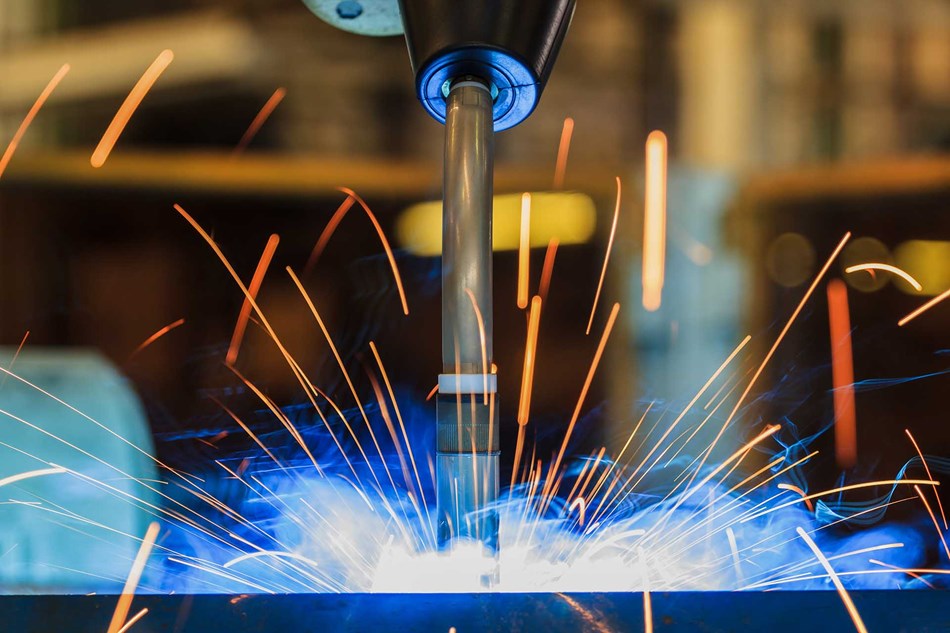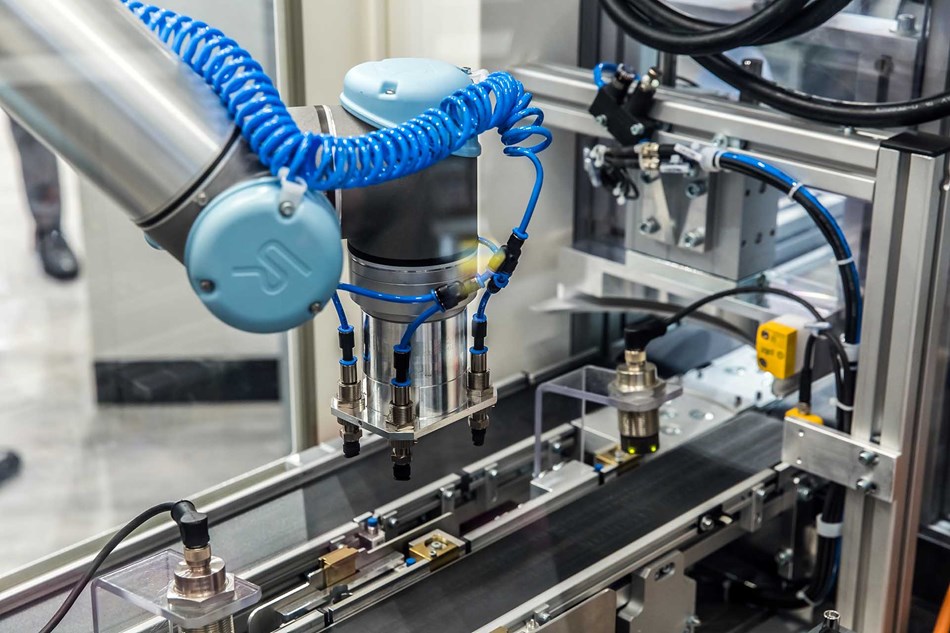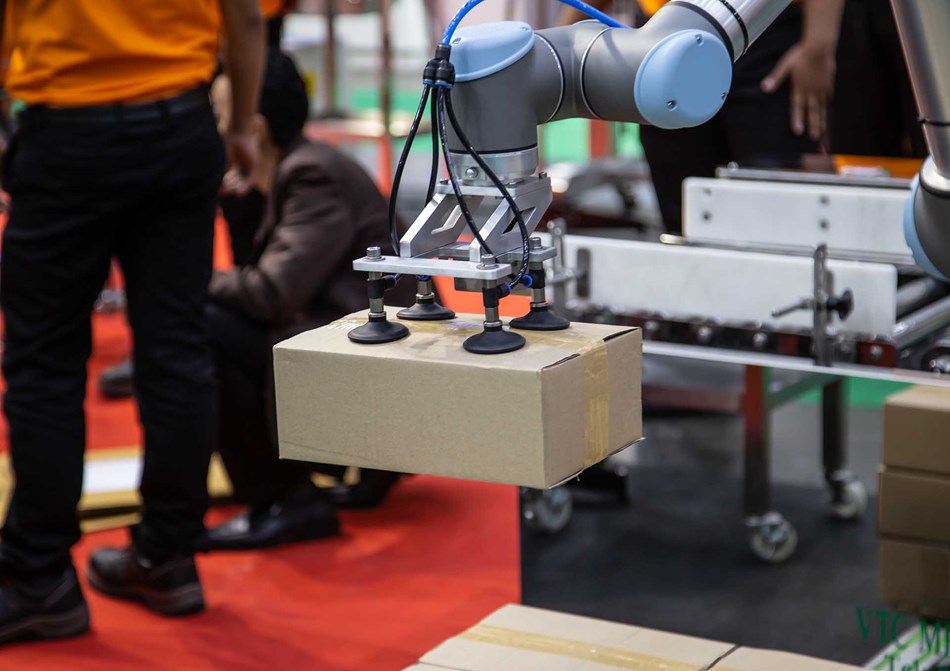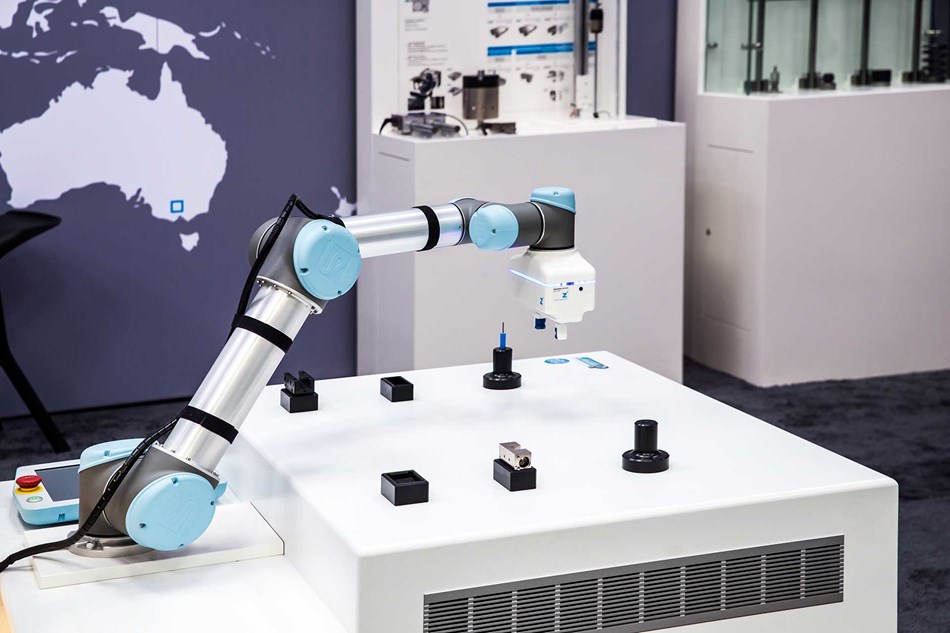Are you ready to apply robotic automation in your production line?
.jpg)
As the market becomes increasingly competitive and customers continue to demand and set higher standards for products, automation is a must for every business. Collaborative robots are one of the most widely used automation robots in production lines today due to their superior production capabilities and safety when working alongside humans.
According to a report from ABI Research, the collaborative robot market will continue to grow significantly over the next decade. From a global valuation of $475 million in 2020 to $600 million in 2021 and $8 billion in 2030, with an expected CAGR of 32.5%. For businesses considering implementing automation robots, consider the following questions to choose the right collaborative robot.
WHEN SHOULD I DEPLOY AUTOMATION ROBOTS IN PRODUCTION?
There are many different ways managers can solve problems in their business. If your manufacturing business is facing these problems, deploying an automation robot such as a collaborative robot can be a good solution.
- Hazardous and toxic production environments that affect human health: Workers are valuable assets of every business. If your employees have to work in a toxic and dangerous working environment that affects their health or your business is spending a lot of money to ensure the health of their employees but still does not bring high work efficiency, choosing to apply an automated collaborative robot is the optimal way to handle these tasks well.

Automated robots are the optimal choice for hazardous tasks
- Work that requires a lot of manual labor and labor shortages as well as high labor costs: As labor costs increase and business fluctuations such as the recent Covid-19 pandemic occur, jobs that have relied too much on manual labor cannot be well guaranteed. Therefore, applying automated robots in the production line is a good choice to replace manual labor while still ensuring costs.
- Productivity and product quality are not as expected: High return rates due to poor quality or productivity not as expected can be due to many reasons. One of those reasons is that manual labor often tends to make subjective errors, and productivity is not guaranteed over a long period of time. Assess whether this situation in your business is due to this reason and consider applying collaborative automation robots.

Robotic automation can ensure productivity and product quality
WHICH TASKS SHOULD BE AUTOMATED BY ROBOTS?
There are many ways to determine which tasks should be automated. Here are some ways businesses can consider.
- Observe your employees: Do your employees feel tired or bored when doing a certain job? Which departments have frequent employee turnover? Answering these questions can reveal which tasks are inefficient when done manually and which machines like automated robots can handle well.
- Identify tasks that cause high employee turnover: Over-reliance on a certain manual worker can cost a business a lot when that worker leaves. Today's automated robots like the collaborative robots from Universal Robots can work continuously and even without maintenance for a long time. See if the job can be automated.
- Identify tasks that are too simple and waste human resources: Simple tasks such as transferring parts from one place to another, removing parts from molds can be done well by automated robots instead of wasting human resources. Workers can do other jobs that bring higher value.

Simple tasks can be replaced by collaborative robots
- Identify tasks that create bottlenecks or cause idle workers. Bottlenecks or idle workers can result from inconsistent quality of work performed by each manual worker. With accuracy and speed that do not change over time, automated robots can take over work in places where congestion often occurs.
WHICH AUTOMATION ROBOT IS RIGHT FOR MY BUSINESS?
Once you have identified the tasks that can be automated, choose a robot with the appropriate standards for the tasks. Some standards you should consider before deploying a collaborative robot include:
- Payload. Some tasks such as palletizing often require an automated robot with the appropriate payload. UR collaborative robots have payloads from 3kg, 5kg, 12.5kg to 16kg, suitable for many different heavy-duty applications.

Pay attention to the load when applying
- Working area/working range: The working area represents the maximum distance the robot can reach. Current UR collaborative robots have working areas ranging from 500mm in the UR3e model to 1300mm in the UR10e model.

UR collaborative robots have working arms ranging from 500mm in the UR3e to 1300mm in the UR10e.
- Safety: To be considered a collaborative robot, robots must meet safety standards when working with humans such as ISO TS 15066.
- After-sales care: After-sales support is also something that manufacturing facilities should pay attention to in order to promptly resolve any problems that arise. Universal Robots offers comprehensive 360 support packages to quickly resolve any problems that arise as well as providing full technical support documents that can be easily found on the website.
- Cost: Cost is something that manufacturers always have to keep in mind when implementing a new technology. Today's collaborative robots are mostly affordable, can be redeployed for many different applications, and can achieve a quick ROI.
Determining which automation robot is right for your production line can be difficult.
Article source: universal-robots.com
